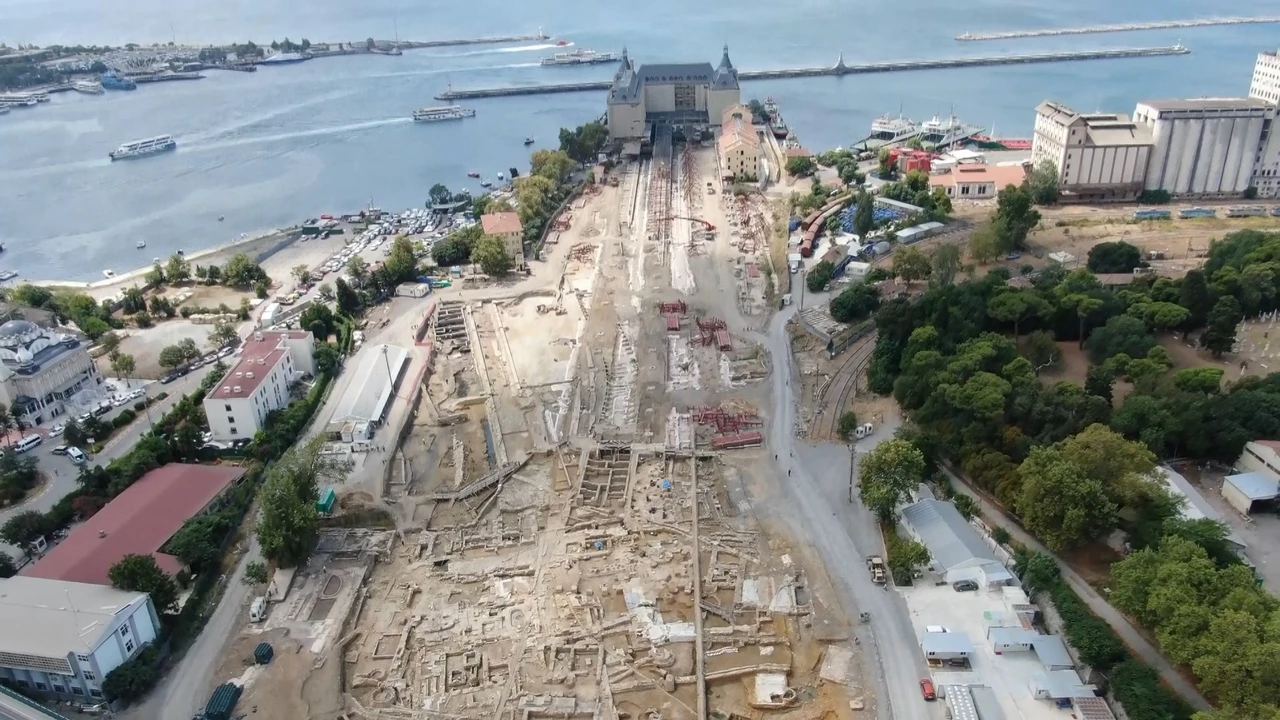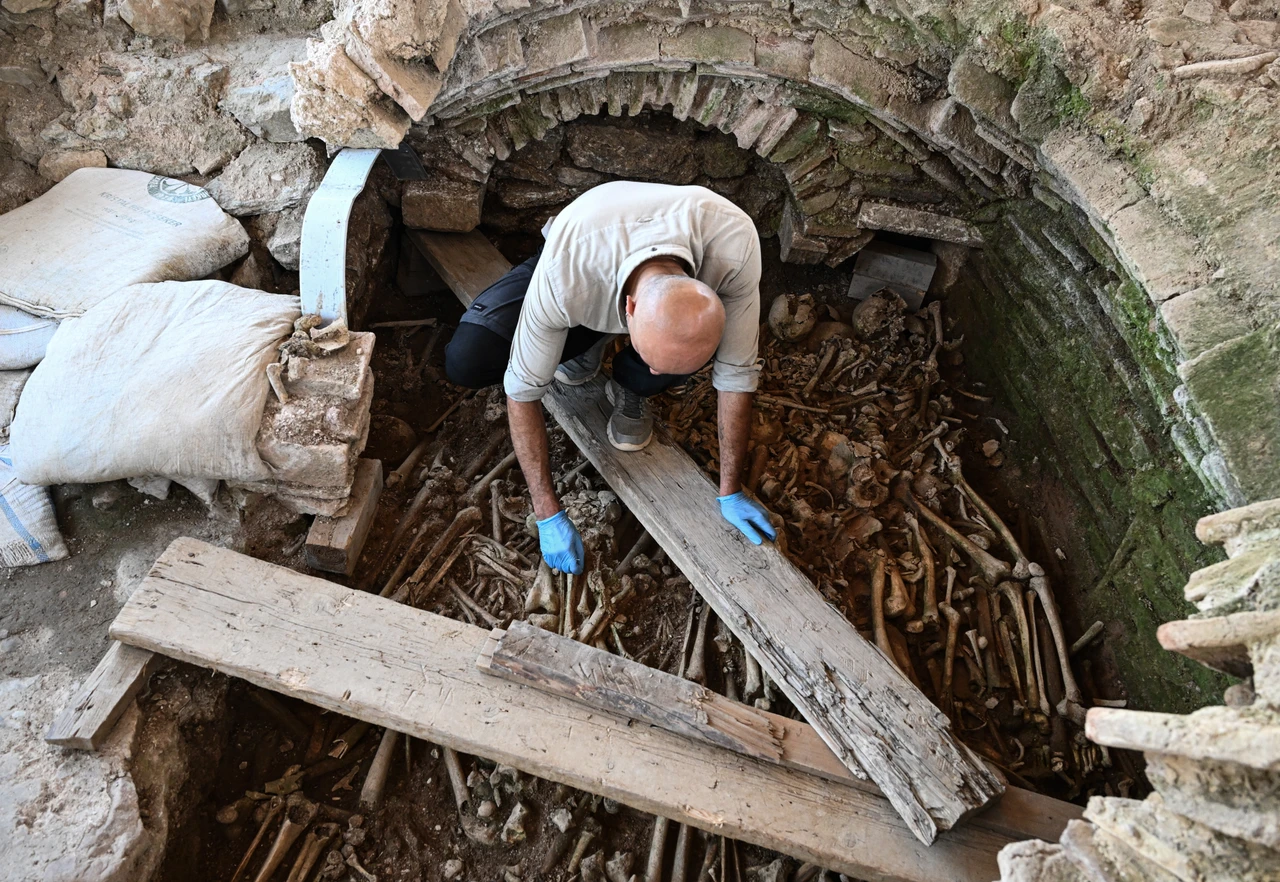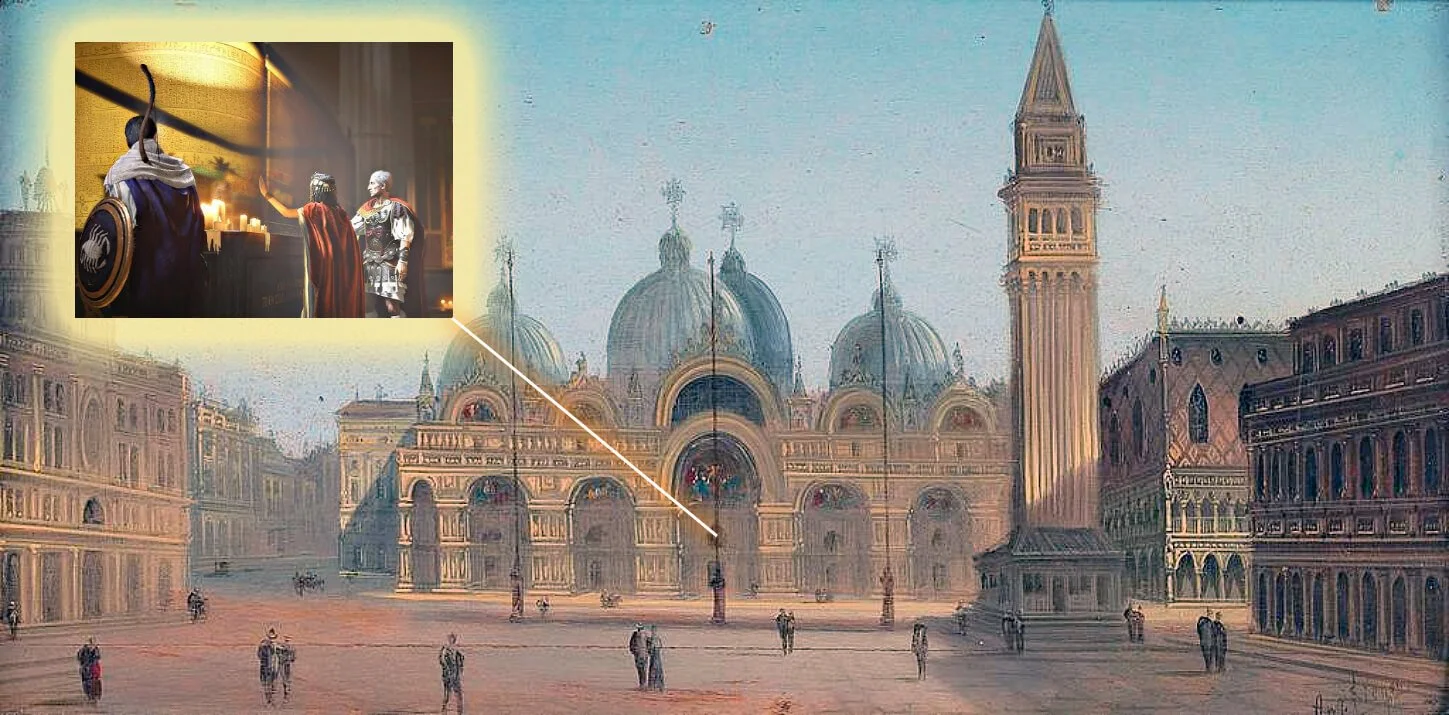Today, Kadikoy is one of Istanbul’s most vibrant, forward-looking districts. But beneath its buzzing streets lies a history stretching back thousands of years—long before it became the bustling cultural hub we know today.
From Harhadon to Chalcedon: A City Born of Trade and Myth
An aerial view of the archaeological site discovered during restoration works at Haydarpasa Train Station in Kadikoy, Istanbul, Türkiye. (IHA Photo)
Kadikoy’s story begins as early as 1,000 B.C., when the Phoenicians established a thriving trading post in the area now known as Fikirtepe. This settlement, known as Harhadon, flourished along the shores, eventually evolving into a small kingdom extending to present-day Izmit (Kocaeli).
By the 7th century B.C., Greek settlers from Megara in Attica arrived and founded Chalcedon near the modern Moda headland. Dubbed the “City of Copper,” Chalcedon was not only a strategic port but also a cultural and spiritual center, once home to the Temple of Apollo and a local hippodrome at Haydarpasa Meadow.
A City “of the Blind”?
A view of the archaeological site discovered during restoration works at Haydarpasa Train Station in Kadikoy, Istanbul, Türkiye. (IHA Photo)
Legend has it that Byzas, son of the king of Megara, consulted an oracle before founding a new city. The oracle cryptically advised him to settle “opposite the land of the blind.” As the story goes, upon reaching the Bosphorus, Byzas saw that settlers had chosen Chalcedon—ignoring the more advantageous position across the water. “They must have been blind,” he said, before founding Byzantium (modern-day Istanbul) on the European side. The phrase stuck, branding Chalcedon as the “land of the blind.”
Rediscovering Chalcedon at Haydarpasa Train Station
An aerial view of the church unearthed during archaeological works at Haydarpasa Train Station in Kadikoy, Istanbul, Türkiye. (IHA Photo)
Fast-forward to June 2018: Renovation work on the historic Haydarpasa Train Station revealed ancient ruins hidden beneath the platforms. Construction was halted, and the site was designated a protected archaeological zone.
Excavations uncovered ruins from the early Byzantine era, including a vast bathhouse complex—a telltale feature of port cities serving merchants and sailors. These findings confirm Haydarpasa's role as one of Chalcedon’s two major harbors. Remarkably, ancient ships could once dock as far inland as today’s Sogutlucesme Train Station.
Archaeologists also traced the region’s first train station back to 1872. Later expansions required massive land reclamation, pushing the coastline 750 meters into the sea.
Saint Bassa and Her Forgotten Sanctuary
Mass tomb unearthed during ongoing archaeological excavations in and around Haydarpasa Train Station, Kadikoy, Istanbul, Türkiye, July 19, 2024 (AA Photo)
One of the site’s most poignant discoveries is the Church of Saint Bassa. A noblewoman-turned-Christian martyr, Saint Bassa was burned alive during a festival honoring Apollo. She was later canonized, and a church was built in her name. Excavators unearthed a hypogeum—a vaulted underground chamber—beneath the church, where multiple skeletons were found stacked together.
A Byzantine Market Under a Modern Mall
In 2019, archaeologists made another exciting discovery near the Nautilus Shopping Mall in Kadikoy: a 5–6 meter wide Byzantine boulevard, lined with ancient shops. Marble columns, ornate capitals, and stone foundations pointed to a bustling commercial district more than a thousand years ago—suggesting that Kadikoy’s role as a trade hub has remained remarkably consistent.
Fikirtepe: Pushing History Back 8,500 Years
An ancient street discovered during excavation work on an empty plot next to Nautilus Shopping Mall in Kadikoy, Istanbul, Türkiye. (Photo via Arkeofili)
The archaeological site at Fikirtepe offers an even deeper glimpse into Kadikoy’s past. Digs here have revealed Neolithic-era dwellings, tools, and evidence of agriculture—tracing human settlement in the area back 8,500 years. What was once a simple riverside village became a cultural and economic center that would endure through millennia.
Underground Secrets from World War II
In this black-and-white photo from the 1950s showing archaeological excavations in Fikirtepe, Kadikoy, Istanbul, Sultan Murad V’s hunting lodge can be seen in the background. (Photo via Istanbul University
Kadikoy’s layered history doesn’t stop in antiquity. During World War II, Turkey—fearing a potential German invasion from Thrace—constructed military tunnels connecting Selimiye Barracks to Haydarpasa Station. Designed to move troops covertly, one partially collapsed tunnel stretches 370 meters and is believed to connect to a far larger underground network.
A City Rediscovered
Visitors and members of the press walk through one of the World War II-era tunnels located at Haydarpasa Train Station in Kadikoy, Istanbul, Türkiye. (Photo via 10Haber)
With every excavation, ancient Chalcedon is slowly reclaiming its place in Istanbul’s rich historical narrative. From Neolithic settlements to Byzantine marketplaces and wartime bunkers, Kadikoy is revealing itself not just as a modern neighborhood—but as a living, breathing archive of human civilization.
Tweet This:
Archaeological digs beneath Kadikoy are rewriting the story of ancient Chalcedon.
From tunnels to temples, secrets of a lost city are resurfacing in modern Istanbul. #Chalcedon #Kadikoy #Archaeology #IstanbulHistory













